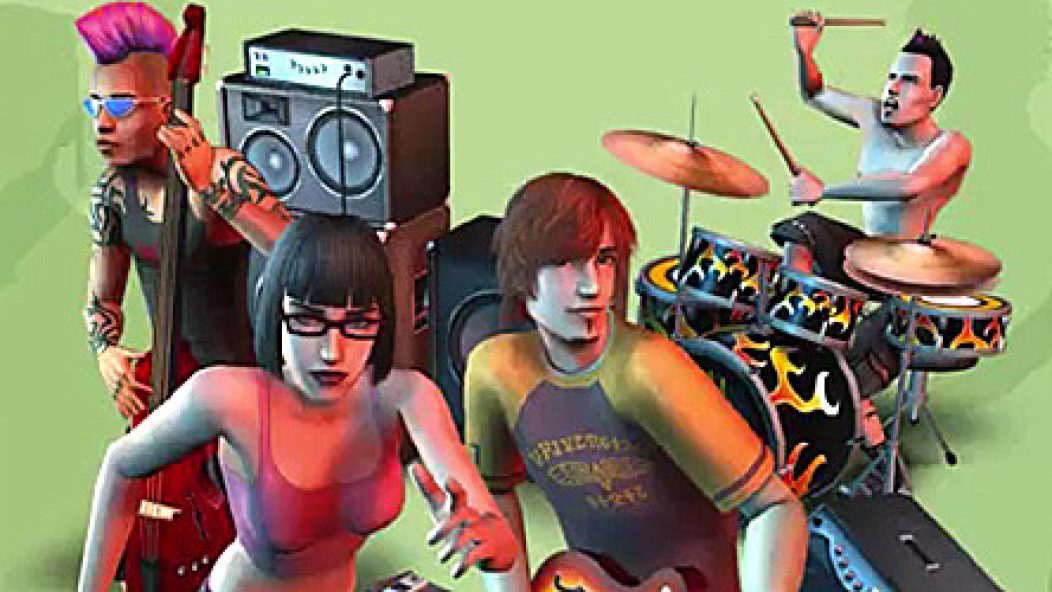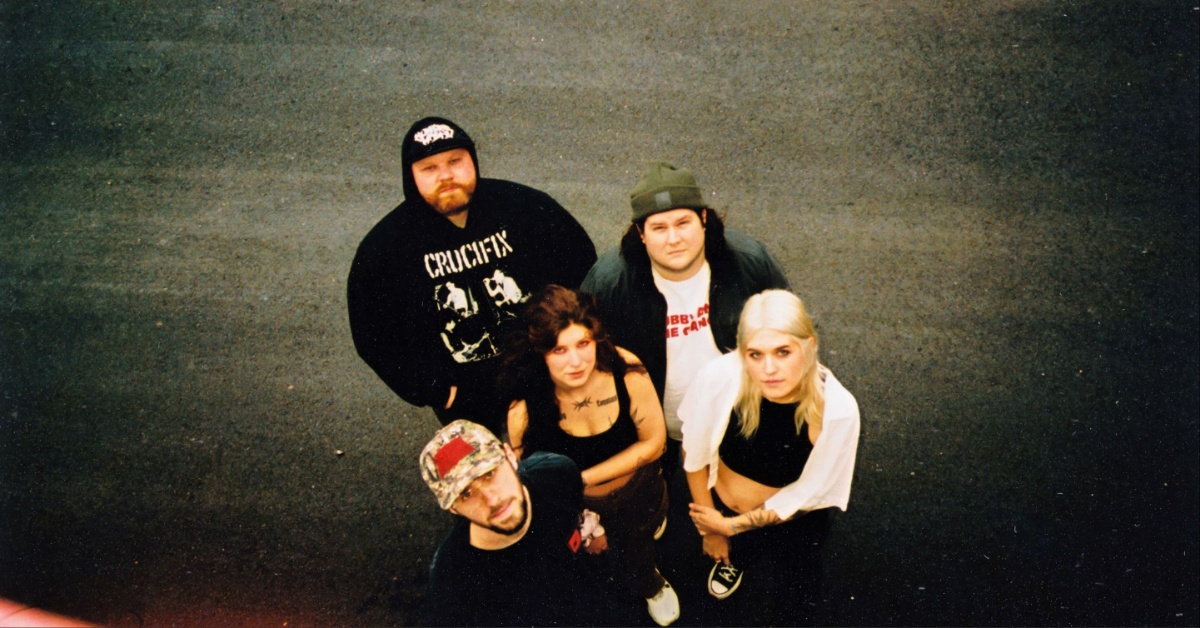
John Cobbett's music for The Sims is effin' hilarious
“Be a Good Child”
(feat. Ross Sewage on vocals)
. . .
Allow me to share some of the funniest music I’ve ever heard. A few minutes before typing this, I was doubled over in laughter, even after hearing it for the umpteenth time. From around 2003 to 2005, guitarist John Cobbett (interviewed here) of Ludicra and Hammers of Misfortune made music for The Sims video game. Fans of the game, not knowing who made the music, put up some of the songs on YouTube and assigned them titles. See, e.g., “Turgid Apocalypse”, “Shun Me Out”, “Ride the Speedway”, and “Man’s Fire” (which someone even covered). Some of the comments are priceless. For example, regarding “Be a Good Child” above, one user remarked, “sounds like six feet under, but a bit more coherent” – even though all the Sims music used gibberish lyrics.
Cobbett made two sets of music for The Sims. The first was for the “metal channel”; the second spanned a wide variety of genres. For vocals, Cobbett drafted Bay Area musicians including Mike Scalzi (Slough Feg, Hammers of Misfortune), Jamie Myers (Hammers of Misfortune), Ross Sewage (Ludicra, Impaled, Ghoul), and Laurie Sue Shanaman (Ludicra). They recorded the songs in manic, deadline-intensive sessions that had them rolling on the ground in laughter.
All the music was written as a parody. It’s hilarious to hear Mike Scalzi spoof Rammstein on a faux industrial number, and Sewage’s Robert Smith impression on a goth/new wave atrocity. Scalzi also turns in amazingly “emotive” performances on “party rock” and “biker rock” (i.e., ZZ Top) tunes. “Be a Good Child”, featuring Sewage on vocals, is spot-on old-school Swedish death metal – and it was written in minutes, like every other song. It puts to shame much of the actual old-school death metal that’s in vogue today. In fact, Cobbett’s parodies of power, speed, and blackened thrash metal are better than much of the serious music in these styles. “Monkey Failure” has Myers on “incantations” and clean vocals, with Shanaman on “grim vocals”. Shanaman delivers one of the most terrifying, haunting performances of her life – and she’s spewing nonsense. Brilliant!
Now you can download all of Cobbetts’ music for The Sims in one convenient package. It contains two folders, one for each set of music, along with detailed notes on who did what. Below Cobbett shares his recollections of the wacky recording sessions.
. . .
DOWNLOAD: JOHN COBBETTS’ MUSIC FOR THE SIMS [88.69MB .zip]
. . .
“Monkey Failure”
(feat. Laurie Sue Shanaman & Jamie Myers on vocals)
. . .
How did you come to make music for The Sims?
In 2003 I received a call from my friend Kris Force (Amber Asylum). At the time, she was working as an audio producer for the Maxis division at Electronic Arts, developers of The Sims video games.
This was at a time when computers and consoles had become fast enough to run MP3-quality sound files in-game, and the developers at Maxis had the idea to have “radio stations”. I’ve never played the game, so I’m not sure how exactly this works, but the point was that they wanted a metal channel. That’s why Kris called me – to create music for the metal channel.
At the time, this was rather uncharted territory (way before Rock Band or any of that). It was up to the staff at Maxis to find people who could make original music, sung in “Simlish”, which is a sort of ubby-dubby gibberish language used in the game.
It hadn’t yet occurred to anyone that the major labels, suffering from ever-declining CD sales, would have jumped at the chance to use video games for product placement, to pimp established artists. This is what eventually happened (starting, of course, with ubiquitous media whores The Black Eyed Peas), putting me out of that business. At the beginning, before the L.A. label lackeys took over, they were using independent, small-time producers like me.
What instructions did EA give you? What reactions did they have to the music?
They wanted it to sound authentic. That was important to them, and they wanted it to sound like different bands and styles – like a radio station. My strategy for this was to write 12 songs (they asked for about 6), and use the opportunity to parody some different styles of metal.
We used every metal cliché in the book with abandon. This is stuff I usually try to avoid: trite chord changes, using breakdowns and guitar solos as arrangement filler, etc. I even put an air raid siren on there. The idea was to be utterly, gratuitously generic.
Also, the “lyrics” had to be 100% “Simlish”: gibberish. We were instructed to be careful not to let any actual words slip through. At one point the company sent a guy, a gibberish coach, to make sure we were getting true nonsense from the vocalists.
They probably had no idea what to make of the music. But they wanted authentic, so the fact that they didn’t understand it seemed to work in our favor. There was me, Mike Scalzi, Jamie Myers, Ross Sewage, Laurie Sue Shanaman – all singing gibberish like possessed maniacs… The company people who came in looked at us, and you could tell they thought we were real weirdos – zoo animals, possibly dangerous – like “whoa, real metal people!”
. . .
“Gheffahschomp” (feat. Mike Scalzi on vocals)
[audio: JOHNCOBBETT_GHEFFAHSCHOMP.mp3]
“Zu Matan” (feat. Ross Sewage on vocals)
[audio: JOHNCOBBETT_ZUMATAN.mp3]
. . .
How did other Bay Area metal musicians come to be involved?
90% of the pubic identifies music by the sound of the singer’s voice, so the key to sounding like different bands was to use a variety of voices. All the music was played by Chewy [Marzolo, Hammers of Misfortune drummer] and I. We all sang at least one song. Jamie, Ross, Laurie, and Mike took a few each. We had some death metal, some thrash, blackened stuff, some “power metal” or whatever you want to call it, and one that was a total Anthrax parody. Basically I had all my band mates who could sing or scream come in and contribute for variety.
Describe the writing and recording sessions for these songs. How long did writing take?
It literally took a few minutes to write each song. It was a simple matter of tossing a riff salad and stringing everything together with the usual clichés: intros, leads, breakdowns, etc. Chewy and I had about 5 rehearsals, and learned 12 songs as quick as we could. When it came to tracking, we kept it as simple as possible. If one of us made a mistake, we just punched in and kept going.
We were under intense deadline pressure the entire time. Everything had to be done quick and dirty. We knew that our names would never go on it, so it was utterly lacking in “artistic” pressure; we weren’t concerned about delivering an inspired, unique performance. It was all about being generic and producing acceptable results in the minimum amount of time. I think the entire 12 song metal channel was done in 32 studio hours.
It was strange; we knew that more people would hear this music than everything all of us had ever done – combined. We were cranking out generic metal songs under a severe deadline, with no real consequences, knowing that millions of gamers would hear it, and never know nor care where it came from.
What are your favorite memories from the experience?
It was very interesting, seeing how much more productive you can be when there are no consequences and you don’t take anything seriously. Mostly, I remember how we laughed! The vocal sessions were a riot. Everyone spewing gibberish off the top of their heads as fast as they could. It was hilarious. We had a blast, even under intense pressure. I think you can hear it in the tracks – the absurdity of it all – we laughed and laughed.
. . .
Ludicra have just been confirmed to play Roadburn Festival 2011.
See announcement here.
. . .










